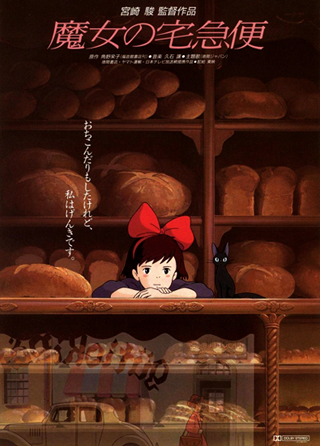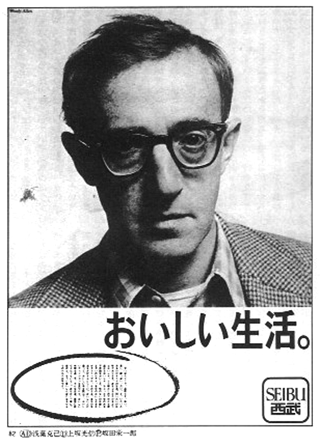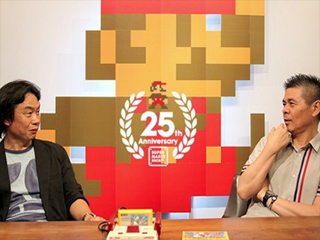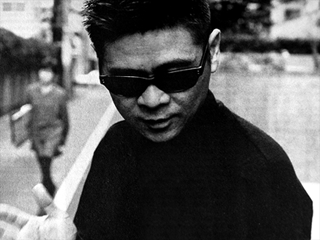- The Life of Shigesato Itoi
- Mother
- EarthBound
- Mother 3
The year is 1948. Maebashi, a small town in Japan. This is where Shigesato Itoi was born, on November 10, in the Gunma prefecture. His name comes from a kanji transcription of the “jyu” and “ri” syllables from the Japanese pronunciation of “Julien Sorel”, the name of the protagonist from Stendhal’s Le Rouge et le Noir. But who is this man? Even though he is virtually unknown outside of Japan, he is actually kind of a cultural icon in his native country. Aged 66 at the time of this article’s writing, he’s had his hand in everything and met with almost everyone. Before talking about what is our main point of interest, the famous Mother video games series of which he is the creator, let’s take a look at his personal path.
Shigesato Itoi’s childhood was a bit complicated, due to his troubled family background. He wasn’t the first child, as he had an older sister, but his parents divorced not long after his birth. He couldn’t see his mother anymore, and his father, a legal adviser, was such an absent man that Itoi’s upbringing was actually handled by his grandmother. Just like most Japanese kids, he still found a way to let it off through reading manga, and he actually once contemplated becoming a mangaka. As early as he got in high school, he showed interest in essays such as those of Morio Kita. This didn’t stop him from acting like a bankara (think “ouendan” meets punk) from time to time. His interest in literature grew along the years he spent in high school, and he became a fan of Edogawa Ranpo’s Western-influenced mystery novels as well as the Tenjou Sajiki troupe’s avant-garde plays. During a cultural festival, he even went as far as to perform a play in which he mirrored anti-Vietnam War Buddhist self-immolations of the era. Towards the end of the 60s, he entered the Faculty of Letters of the prestigious Hosei University of Tokyo. He took part in the student movement that shook the political landscape of Japan back then, but he ended giving up his studies altogether. This is when he realized he didn’t really have a plan in life, apart maybe from becoming a hat designer. He thus decided to find a job and, in 1971, he went back to school in the hope of becoming familiar with a rather novel activity: copywriting.
What is copywriting, you may say? Well, the wide-ranging task of the copywriter may involve the creation of catchphrases and slogans or the conception of advertising campaign, for a variety of possible purposes. During the asset price bubble that shaped Japan’s economy in the ’80s, copywriting became quite a popular practice, and this was the climate in which Itoi rose to prominence. In 1983, his slogan Oishii Seikatsu (“Tasteful Life”) for a Seibu department store ad campaign, featuring Woody Allen (who was still unknown in Japan at the time), somehow broke new grounds. This marked the beginning of a very intriguing career characterized by a both strange and concise writing style, which profited such various entities as TV channels or rock bands, and it was prestigious enough to be solicited by the legendary Studio Ghibli. Itoi actually wrote the catchphrases for most of Miyazaki’s films, including the one for his 1989 coming-of-age masterpiece Kiki’s Delivery Service: Ochikondari mo shita kedo, watashi wa genki desu, which roughly means “I’ve had hard times, but I’m well”.
This may all seems pretty weird from an American or European standpoint, that a whole career could have been built on such works. But the Japanese public REALLY was all crazy about that stuff back then. However, if Itoi is that famous, this isn’t ALL thanks to his copywriting works – it’s only a part of what’s he been producing throughout his life. Indeed, he didn’t just decide to become a copywriter for the sake of working in the field of communication studies – he did it because he needed a job, and because that was the way he had found to “make people happy”, to use his own words. He consequently sort of quit his copywriting activities a dozen of years ago, when he thought the world of advertising didn’t really allow for that anymore. He didn’t wait to try his hand at other activities though – as early as 1976, he started writing, and he rose to something else in 1981 when he co-authored a short sorties collection named Yume de Aimashou (“Let’s Meet in A Dream”) with none other than Haruki Marukami, the world-famous writer of Kafka on the Shore. Itoi’s style was already unsettling – he wrote weird short stories that bordered on surrealism but managed to keep a very light-hearted feeling. Even Murakami himself would be left fascinated by this collaboration. This book is the first in a very long series of Itoi’s works which include poetry and a novel called Kazoku Kaisan(“Family Breakdown”), but what makes up most of the guy’s bibliography are his first love: essays. The topics covered practically everything – copywriting in all its aspects, food design, his dog Bouillon, mail order catalogs, his experience with smoking cessation, economics, the arts, you name it. All of this, plus voluminous anthologies of articles that were published in Hobo Nikkan Itoi Shinbun.
Hobo Nikkan Itoi Shinbun is actually Itoi’s tribune. This project was initiated in 1998, around the time when he started to get fed up with promoting other people’s works – that is, when he decided to find another way to “make people happy”. He bought a Macintosh, discovered the emerging world of the Internet, and decided to launch his very own website that he would update when he felt like it. The website’s name translates to something along the line of “Itoi’s Almost Daily News”, and it was named that way in case of potential irregularities in content updates… which have NEVER happened once as of yet, in more than fifteen years of existence.
The website’s formula is a bit peculiar – it doesn’t really have a central theme, it really just is centered around Itoi’s thoughts on everything. It’s mostly philosophical or lifestyle stuff due to their versatile nature, or trivia about Bouillon because he really does love his dog. Most of those “thoughts” aren’t archived and just disappear after a while, in the attempt to emulate the fleeting feeling of daily chats with friends that just ends up being forgotten and rediscussed a few days later. More complete and serious articles can be found too, including some on the Mother series, as well as a whole lot of interviews. This is because Itoi is an interviewer as well, and a pretty renowned one at that. He’s often requested by various entities (including Nintendo) for his skills in conducting interviews, during which he talks over all kind of things with, such various personalities as businessmen, neurologists, painters, rappers or anyone else really. The website also has another distinctive trait – there is no advertising whatsoever, which contrasts with how major Japanese websites tend to be flooded with them. The income comes from another source – an online shop that sells not only books by Itoi and other authors, but also small items such as organizers, heating belts, rice bowls, coffee blends or DVDs about Yoshimoto Takaaki’s philosophy. That, and a music label centered on alternative rock called Hobonichi Records. And all of this is very popular. His office has a little more than 40 employees, who work in a relatively lax atmosphere judging from the pics where they’re often seen doing stuff you wouldn’t really expect to happen in a workplace. Itoi even went in vacation to Bali with his full team one time, and he’s known for his personal quirks like forbidding employees from coming to work on January 29, as this day is supposedly reserved for “wandering around town”, “bothering people” or “wearing weird clothes”. But not even the entire collection of Hobonichi anthologies could be enough to figure out Itoi’s pattern of thought.
Because he also had his hand in yet a lot of other things. In the ’80s, he held a satirical column called Hentai Yoiko Shinbun in the Bikkuri House subcultural magazine – it’s also around that time that he put his copywriting skills to the profit of a campaign against the Gulf War, notably with a slogan stating that “whatever happens, dying sucks”. He is no stranger to cinema either: his work with Miyazaki didn’t stop at catchphrases, and he actually voiced Mei’s and Satsuki’s father in the 1988 timeless classic My Neighbor Totoro. He also held roles in a bunch of films, including avant-garde director Koji Wakamatsu’s 1984 obscurity Scrap Aru Ai no Monogatari and the more recent and accessible 2010 psychological drama Norwegian Wood, that so happens to be based on a novel by Haruki Murakami. Of course, he tried his hand at music as well – he has written quantities of songs for other artists including electronic and pop pioneer Ryuichi Sakamoto, but he also has written and voiced his own new wave album called Penguinism in 1992. More recently, in 2011, he even housed a chiptune concert by Prof. SAKAMOTO in his office’s building. He also happens to be an ingrained fisherman who sometimes competes in national tournaments, and he turned this passion into a video game in 1997 with the Satellaview-backed Itoi Shigesato no Bass Tsuri No. 1, which was so surprisingly successful for a fishing game that it spawned a Nintendo 64 remake three years later, a system that bears this name because Itoi himself choose it at Nintendo’s request. He also appeared in a whole bunch of TV shows like Iron Chef or Hey! Spring of Trivia. Another passion of his is ants observation. He used to be a gold miner. He’s the president of the Japanese Monopoly Association. He loves dancing. He can do everything. Even a video game series, actually. Which bring us to what you’re probably reading this for in the first place: The Mother series.







